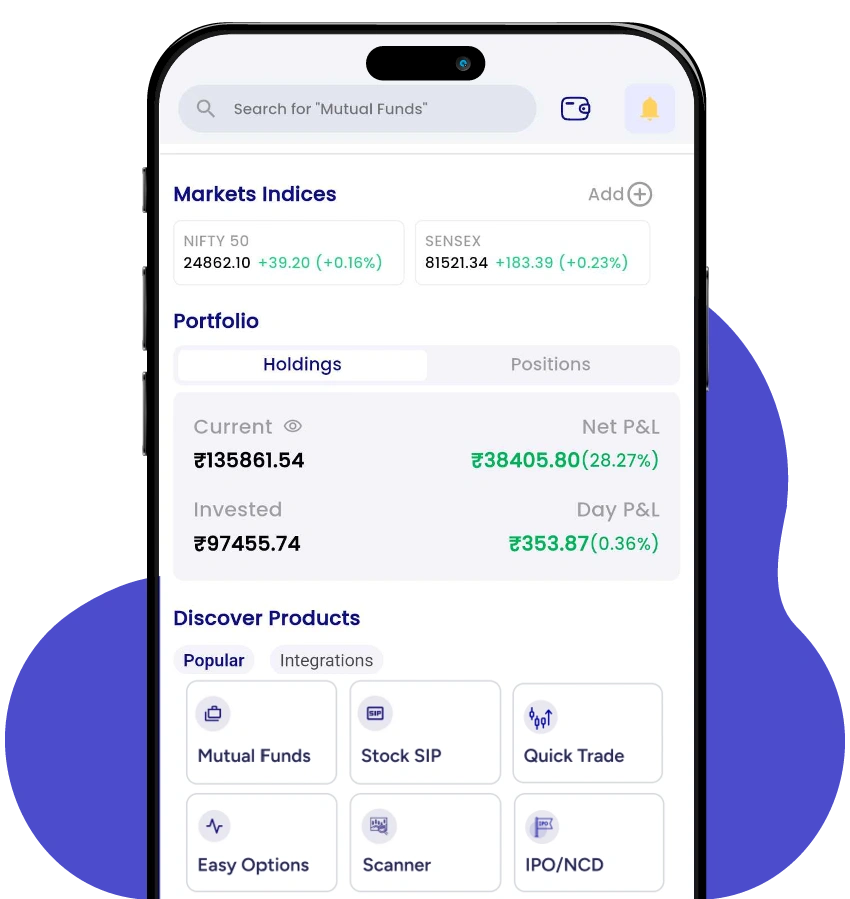What are Gilt Funds?
- 9th September 2025
- 10:00 AM
- 8 min read
As of the initial half of 2025, the mutual fund sector in India has seen a surge in net inflows with a valuation of INR 4.18 lakh crore. This shows an increasing interest of Indian investors in mutual funds.
However, risks also come with a mutual fund investment, and Gilt funds can be an option for you to earn an optimised and potentially stable return at a minimal credit risk.
A Quick Overview of Gilt Funds
If you are a new mutual fund investor or have already begun your journey, you must have come across terms like equity, debt or hybrid funds as categories of this investment option.
Here are some crucial aspects about this type of fund that you must know:
- Gilt funds are categorised as a debt mutual fund that focuses on fund allocations across bonds and other fixed and interest-bearing securities.
- Such funds focus on investing at least 80% of their portfolio in securities issued by the Indian government. Thus, it carries a lower risk compared to other funds, such as corporate bonds.
- As an investor, you can invest in both a lump sum and using a Systematic Investment Plan or SIP. However, you must note that, being a comparatively secure investment option, fluctuations in interest rates impact your return potential.
Key Features of Gilt Funds for Investors
Now that you know what is gilt fund, you must note that such a fund has features of possible capital appreciation, an optimised yield for a moderate to longer investment tenue:
-
A Chance of Capital Appreciation
If you invest in Gilt funds and stay invested for about 10 years, there is a chance that you might enjoy capital appreciation. The range of this appreciation is 2 to 3 per cent, but is subject to anticipated fluctuations in interest rates.
-
An Optimised Yield
These funds have the potential to generate an optimised yield for you if you stay invested in them. For example, over the course of the last 5 years, such funds have generated an average yield between 6% and 7% per annum. Once again, you must consider the market condition and interest rate fluctuation to get an adjusted return figure.
-
Moderate to Long Investment Horizon
If you are new to investment, you must know that a long-term investment usually has the potential to generate an optimised return. Gilt funds, as one of the mutual fund investment plans, usually have a moderate to longer investment horizon, between 3 and 10 years.
A Detailed Process of How Gilt Funds Work
To get an in-depth understanding of the gilt fund meaning, you must take a look at its working process.
When the Indian government needs loans or funds, it asks for the funds from the Reserve Bank of India.
You can think of RBI as a banker to the Indian government, and the process takes place as follows:
- The RBI approaches financial entities such as banks and insurance companies to borrow the said fund.
- The RBI then issues government securities with fixed tenure, such as a 10-year bond worth INR 1,000 crore at a fixed tenure.
- Gilt funds managers pool INR 100 crore from investors and subscribe to the securities. This is to receive money with interest after the maturity period.
- Thus, such funds become an optimal blend of reasonable return with lower risks for investors, with its dependency on interest rate swings.
Benefits of Investing in Gilt Funds
As the government issues the underlying securities of these funds, the credit risks get lower and bring the additional benefits you must seek from an investment:
-
Low Credit Risks
The Indian government issues the underlying securities of these funds, and it carries minimal to no credit risk. This is because the government might never fail to deliver on their obligations, and this makes such funds a risk-free investment option for you.
-
Portfolio Diversification
Investing in Gilt funds is not only comparatively safe but also helps with portfolio diversification that further reduces risks. For example, if you put INR 20,000 in a Gilt fund alongside INR 80,000 in equities, your overall portfolio becomes more stable against volatility.
-
Benefits of Falling Interest Rates
When interest rates fall, new bonds come with lower yields. This makes the older bonds with higher fixed interest rates valuable in the market. The recent 50 bps repo rate cut by the RBI reduced yields on new bonds. Since most of the funds are invested in securities like bonds, this shift makes existing higher-yield bonds attractive, which increases the unit values.
PL Capital Group – Prabhudas Lilladher brings you a quick and easy option to start a mutual fund investment. Download the PL Capital app, complete your KYC and start investing in a few minutes!
Suitable Investor Types for Gilt Funds
You can begin investing in this fund if you have a moderate to high risk profile and a higher investment horizon due to the following reasons:
- Gilt funds investments are suitable for investors with a moderate to higher risk appetite. This is because, if the interest rate spikes, the Net Asset Value drops, resulting in losses.
- If you are new to investments, you must know that generating an optimised return from them requires knowledge of the bond market with an entry and exit strategy.
- Since the underlying assets of such funds have lower credit risks, investors with a moderate to long-term investment horizon can expect an optimised return from this option.
How Should You Invest in a Gilt Mutual Fund?
Investing in this type of fund is now made easy with PL in 4 easy steps:
Step 1: Download the PL Capital app from the Play Store or App Store.
Step 2: Complete the instant KYC process with your PAN card, Aadhaar Card and bank details.
Step 3: Look for the mutual fund tab in the app and choose your preferred Gilt Funds. Also, choose the investment method, such as an SIP or a Lump sum.
Step 4: Enter the amount to invest, transfer the amount from the bank and start your investment.
Tax Implications on Gilt Funds
Due to frequent changes in the Indian Income tax regime, tax implications on gains from gilt funds might seem confusing. Therefore, refer to this detailed and easy-to-understand breakdown:
-
Investments Made Before April 1, 2023
- Short-Term Capital Gains (STCG): If sold within 36 months, gains are treated as STCG and taxed according to your income tax slab.
- Long-Term Capital Gains (LTCG): If held for 36 months or more, gains qualify as LTCG, previously taxed at 20% with indexation.
- Budget 2024 Changes: If these older investments are sold on or after July 23, 2024 and held for more than 24 months, they now qualify for LTCG at 12.5%, without indexation.
-
Investments Made On or After April 1, 2023
The distinction between STCG and LTCG has been removed for debt funds, including gilt funds. All gains are treated as STCG and taxed as per your income tax slab, with no indexation benefits.
Conclusion
Gilt funds have the potential to deliver a stable income at a lower credit risk over a medium to long-term investment tenure. However, such an investment option is affected in case of a spike in the interest rate. If you have decent bond market knowledge and a moderate to high risk tolerance, you can invest in it.
Apart from investing in only mutual funds, diversify your portfolio with equity investments with PL. Download the PL Capital app today and start investing!
Frequently Asked Questions
1. Which kind of securities does the Gilt Fund invest in?
When you choose a Gilt fund for investments, such a fund invests your money into governmental debt instruments, treasury bills, etc.
2. What is the risk of gilt debt funds?
One of the most important risks is the interest risk, as with a spiking interest rate, the NAV decreases. Also, if the economy goes through a higher growth phase, such funds might generate negative returns.
3. Are Gilt funds better than FD?
There is a possibility of these types of funds providing a stable and predictable return similar to an FD. Also, due to being open-ended, such funds have higher liquidity compared to FDs.
4. Is investing in Gilt funds safe?
From the perspective of credit risks, the underlying assets of this fund type are governmental securities with almost no default risk. However, interest rate risk impacts its return potential.




